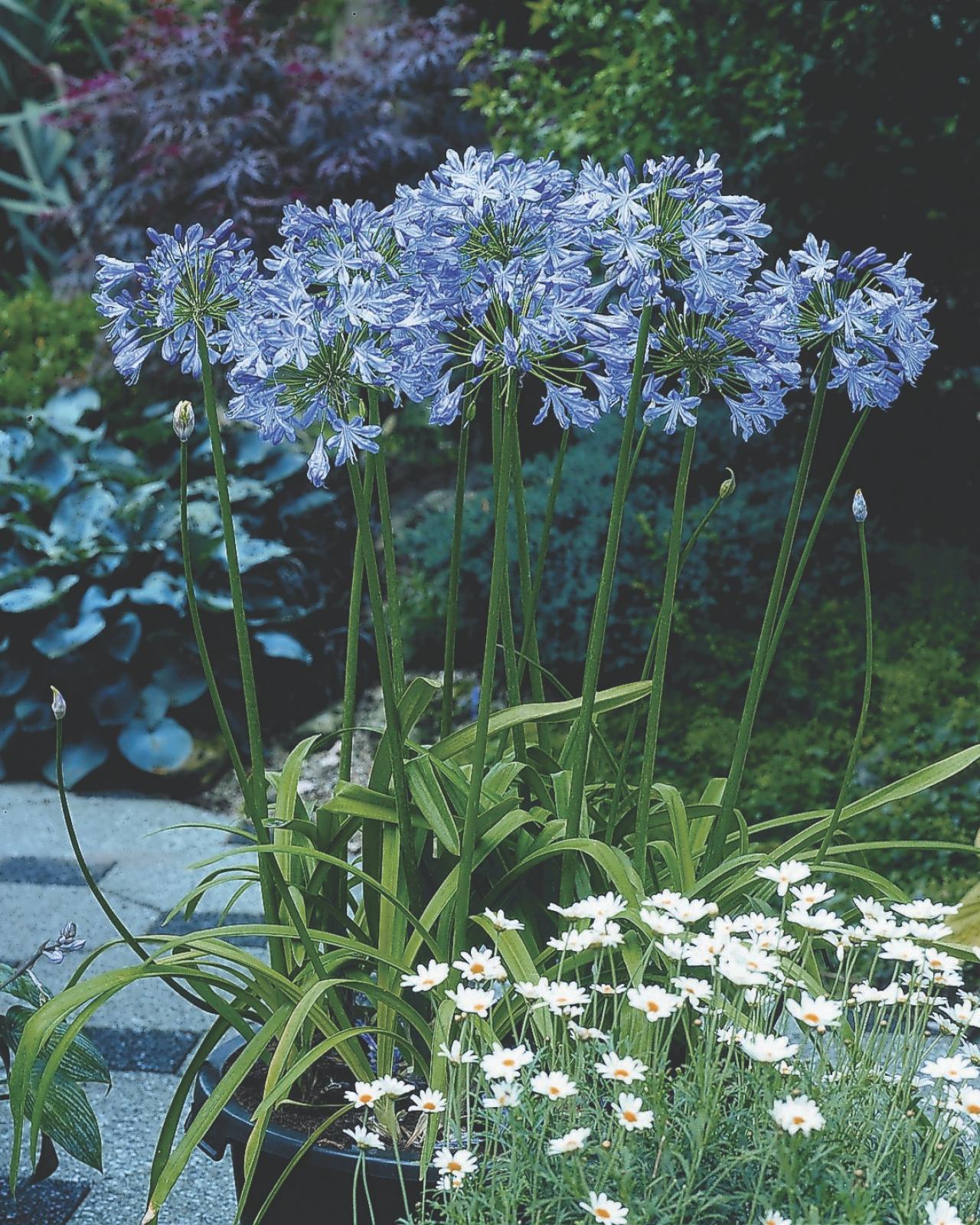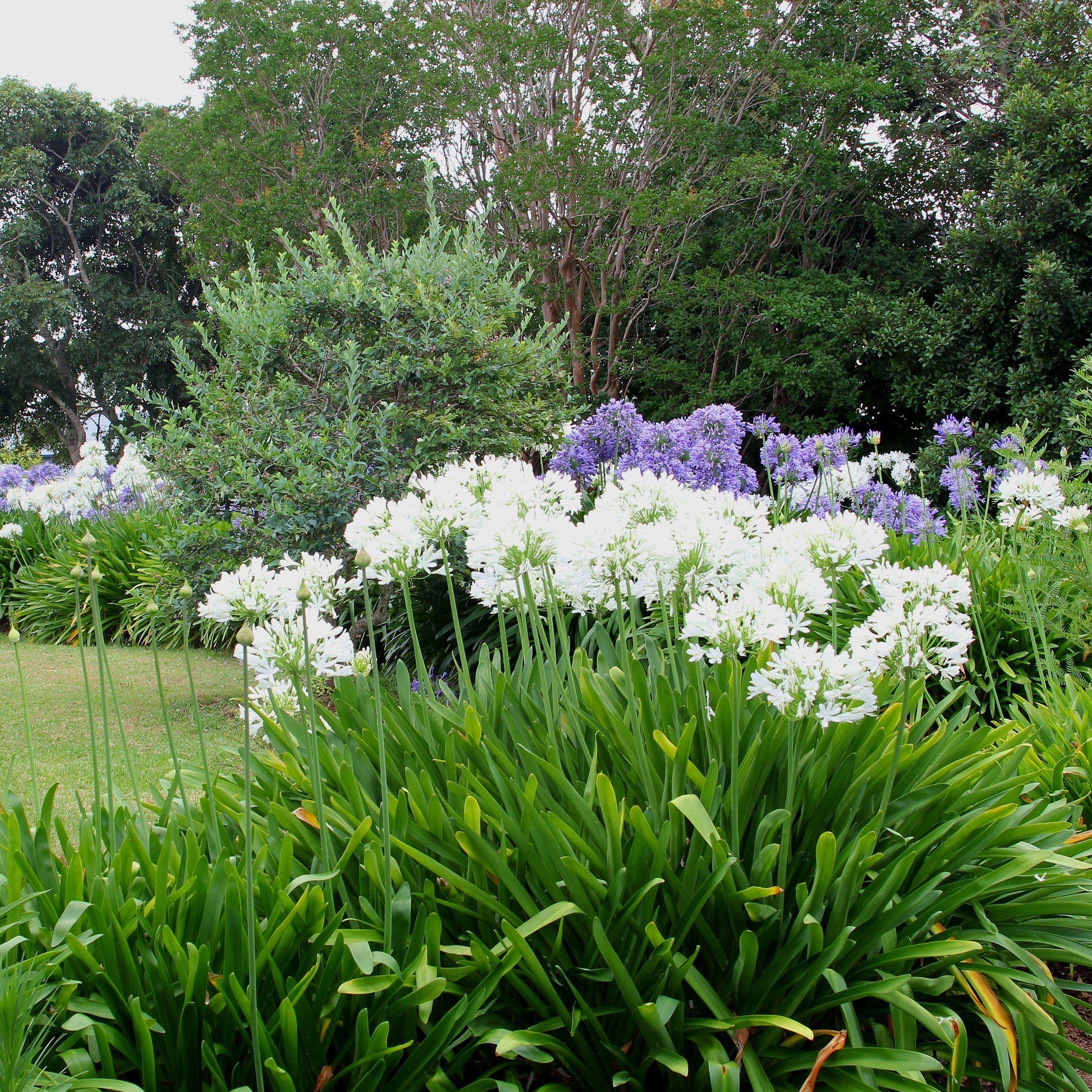Sensational Agapanthus: Enhancing Your Garden's Charm
Wiki Article
Letting Loose the Secret to Successful Agapanthus Cultivation: Idea for a Flourishing Garden
In the realm of horticulture, cultivating agapanthus successfully calls for a critical strategy that includes different aspects of plant care. With cautious interest to detail, one can open the keys to supporting these sensational flowers, resulting in a garden that flourishes with elegance and vibrancy. By understanding the nuances of agapanthus cultivation, one can develop an atmosphere where these plants flourish and flower abundantly. In the adhering to conversation, we will certainly discover important pointers and techniques that will assist you towards a growing agapanthus garden, using understandings into ideal practices, soil problems, watering methods, and extra.Growing Agapanthus: Best Practices
When planting Agapanthus, appropriate dirt prep work is important for making sure effective development and development of these stunning blossoms. Agapanthus, generally called Lily of the Nile or African lily, thrives in well-draining dirt with a slightly acidic to neutral pH level - Agapanthus. Before planting, it is important to modify hefty clay dirts with natural issue such as compost or peat moss to improve drainage and provide vital nutrients for the plantsTo grow Agapanthus, choose an area that receives full sunlight to partial shade, as this will promote healthy growth and abundant flowering. Dig an opening twice the size of the plant's root round and put the Agapanthus at the very same depth it was previously expanding. Gently backfill the hole with dirt, pushing down securely to eliminate any air pockets around the roots.
Water the newly planted Agapanthus completely and remain to keep the dirt uniformly moist, particularly throughout the plant's energetic growing season. Agapanthus. Applying a balanced fertilizer once a month can additionally support the plant's development and blooming. By following these ideal methods for planting Agapanthus, you can produce a sensational display of these captivating flowers in your yard
Perfect Soil Issues for Agapanthus
For optimal growth and growing success of Agapanthus plants, making certain the soil problems are excellent is essential. Agapanthus grows in well-draining dirt with a somewhat acidic to neutral pH degree varying from 6.0 to 7.0. This sort of soil enables for adequate water drainage, stopping waterlogging which can bring about root rot. To boost dirt drainage, think about adding natural matter such as compost or peat moss when preparing the growing site. Moreover, Agapanthus favors soil that is rich in nutrients, so including a balanced plant food throughout the expanding period can promote healthy and balanced growth and dynamic blooms.
Watering and Feeding Tips
To ensure healthy development and vivid blossoms, correct watering and feeding strategies are crucial for successful Agapanthus growing. Agapanthus plants benefit from regular watering, especially throughout the expanding period.When it pertains to fertilizing Agapanthus, a balanced fertilizer with equivalent components nitrogen, phosphorus, and potassium can be used in the spring to promote healthy development and blooming. Slow-release fertilizers are ideal for providing nutrients gradually over an extensive duration. Prevent over-fertilizing, as this can result in excessive vegetation development at the expense of blooms.
In addition, including organic matter like compost into the official site dirt can improve nutrient levels and improve dirt framework, aiding in the total wellness of the Agapanthus plants. By complying with these watering and fertilizing pointers, garden enthusiasts can ensure their Agapanthus plants thrive and generate spectacular displays of blossoms.
Pruning and Deadheading Techniques
Correct pruning and deadheading strategies play a vital function in keeping the health and aesthetics of Agapanthus plants, enhancing the vital techniques of watering and fertilizing for successful cultivation. Trimming Agapanthus includes removing invested flower heads, dead or yellowing leaves, and general shaping of the plant to promote much better growth. Deadheading, the procedure of removing discolored flowers, not only boosts the plant's appearance however additionally motivates advice more flowering.When deadheading Agapanthus, it is advisable to clip off the blossom stem at the base using sharp, tidy shears. This process redirects the plant's power from seed production back right into origin and foliage development, advertising a healthier and extra robust plant. Routine deadheading can expand the blooming duration of Agapanthus and prevent self-seeding, which can result in congestion.
In regards to pruning, Agapanthus typically take advantage of a light trim after flowering to clean up the plant and urge fresh growth. Cutting back the invested blossom stems and removing any type of dead or broken foliage assists keep the plant's vitality and overall appearance. Nevertheless, it is essential to prevent reducing right into the crown of the plant, as this can damage its health.

Protecting Agapanthus From Pests and Diseases
Executing efficient bug and condition monitoring approaches is crucial to protecting the health and vitality of Agapanthus plants in cultivation. Agapanthus are typically sturdy plants, however they can still succumb various insects and illness if not appropriately cared for. One common insect that affects Agapanthus is the Agapanthus borer, a caterpillar that tunnels right into the plant, creating damages to the flowers and leaves. To avoid infestations, routine inspection of the plants is necessary. If borers are found, they can be by hand eliminated, or insecticidal soap can be utilized as a control step.In enhancement to bugs, Agapanthus are at risk to conditions such as root rot and fungal leaf places. These problems can typically be avoided by ensuring correct drain and avoiding overwatering. If indicators of illness show up, impacted parts of the plant need to be quickly removed to avoid further spread. Fungicides may additionally be utilized as a therapy step, adhering to the maker's instructions very carefully. By staying attentive and addressing bug and disease problems promptly, site link gardeners can aid their Agapanthus flourish and prosper.

Verdict
Finally, successful cultivation of agapanthus needs appropriate growing methods, ideal soil problems, adequate watering and fertilizing, regular pruning and deadheading, and protection from insects and illness. By complying with these ideas and methods, garden enthusiasts can make certain a prospering yard loaded with attractive agapanthus blossoms. Agapanthus. Bear in mind to keep constant treatment and focus to information to advertise the health and durability of these spectacular plantsWhen planting Agapanthus, proper soil prep work is crucial for making certain effective development and advancement of these stunning flowers.Water the newly grown Agapanthus extensively and continue to keep the soil evenly wet, specifically throughout the plant's active growing period.For ideal growth and blooming success of Agapanthus plants, making certain the dirt problems are suitable is important. When hair transplanting or planting Agapanthus, ensure the dirt is well-prepared to supply the required foundation for the plants to develop themselves effectively. One common parasite that affects Agapanthus is the Agapanthus borer, a caterpillar that passages into the plant, creating damages to the fallen leaves and blossoms.
Report this wiki page